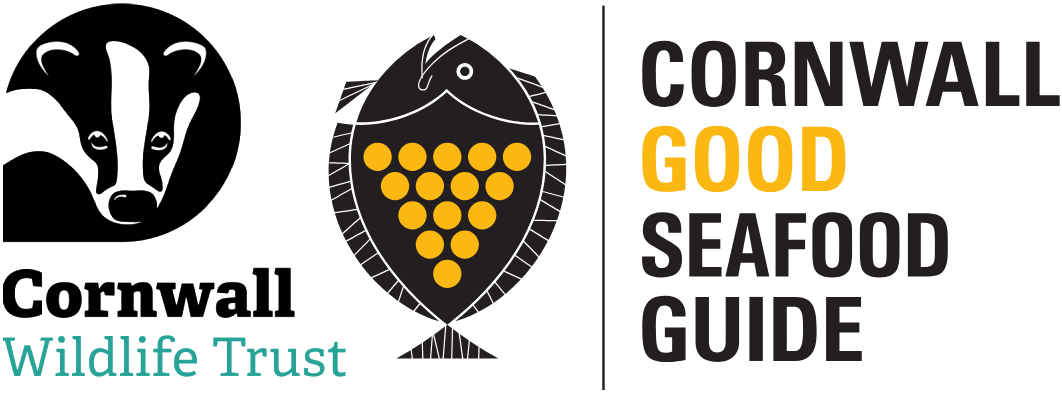
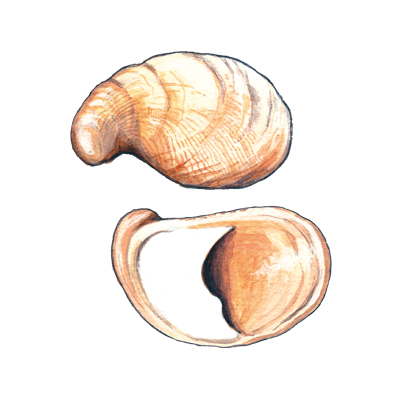
Slipper limpets are abundant shellfish that are caught by oyster fishermen in the Fal estuary. Slipper limpets have a yellow disc of meat approx one inch across which is high in protein and can be eaten raw or lightly cooked. It is increasingly popular in France where it is commercially being harvested in the bay of Mont St Michel, Brittany. Commercial fisheries have not yet been established in Cornwall but small quantities are occasionally landed.
Slipper limpets are under utilised and abundant on the Fal oyster beds. They are a non-native species that arrived in the UK from in the late 1800's with imports of american oysters. it rapidly spread and is now considered an invasive species and a pest on oyster beds. They are thought to compete with oysters for space and food and produce abundant slimy pseudo faeces which may harm native oysters and their spat. This species is currently not used for human consumption but it is edible and has featured on the menu of Rick Steins Seafood Restaurant. It can easily be harvested by oyster fishermen in large quantities but currently there is insufficient demand so this resource is not being utilised.
Updated October 2017
Fal estuary

Sustainably harvested using lightweight dredges that are towed by traditional sail boats and rowing boats. As slipper limpets are a non native species they are not rated using the MCS methodology.
Learn moreCornwall Good Seafood Guide rates seafood sustainability using a scale of 1to 5
1,2 and 3 are recommended, Fish to avoid are rated 5.
The ratings for this species are produced independently by Cornwall Wildlife Trust as a guide to help consumers make good seafood choices. click here.
Slipper limpets are a snail like mollusc that lives attached to shells and rocks on the sea bed in shallow estuaries and bays. They have a domed shell, oval or kidney shaped which is up to 5cm long with an internal flat shelf. They often aggregate into chains or leaning stacks of up to 12 individual animals. Slipper limpet meat can be easily be removed from the shell by freezing and defrosting and then manual removal or mechanical removal through shaking (Dave Smethurst honours project Newquay Centre for Applied Zoology). The shells of slipper limpets are additionally a useable source of calcium carbonate, and have massive potential in soil conditioning on acid soils and use as an ingredient in concrete and other building materials.
There are estimated to be far more slipper limpets than oysters on the Fal oyster beds and they are also common in the Percuil and Helford estuaries.
There is no management for this species at present. No commercial fishery exists yet.
Slipper limpets can easily be collected by oyster dregers but until there is a market for this species they are being discarded (alive) back to the oyster beds.
Slipper limpet management and utilization in the fal Andy Fitzgerald
La Crepidule - French website marketing Breton Slipper limpets
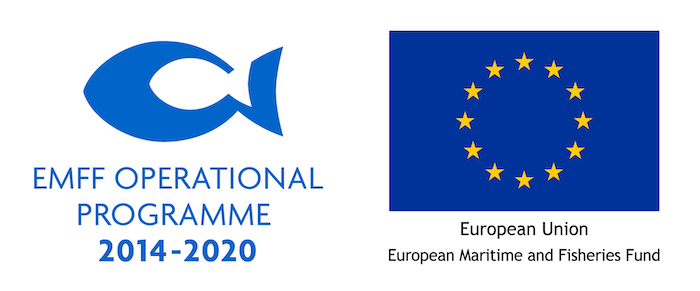
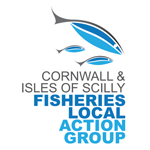
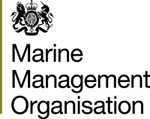



Cornwall Good Seafood Guide is underpinned by the Marine Conservation Society (MCS) Good Fish Guide. The first UK consumer guide to sustainable seafood. For more information visit www.fishonline.org
Cornwall Good Seafood Guide is here to help us all make sustainable seafood choices. Choices that will help us keep the oceans healthy and Cornish fishers' futures safe. This website is funded by Cornwall Wildlife Trust. If you would like to make a meaningful difference to the health of our oceans, please consider making a donation to the Cornwall Wildlife Trust Ocean Emergency fund. Your donation will help safeguard these remarkable environments, ensuring that they continue to thrive for generations to come. Together, we can be stewards of the seas and champions for a healthier, more sustainable future.